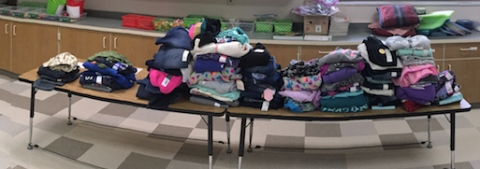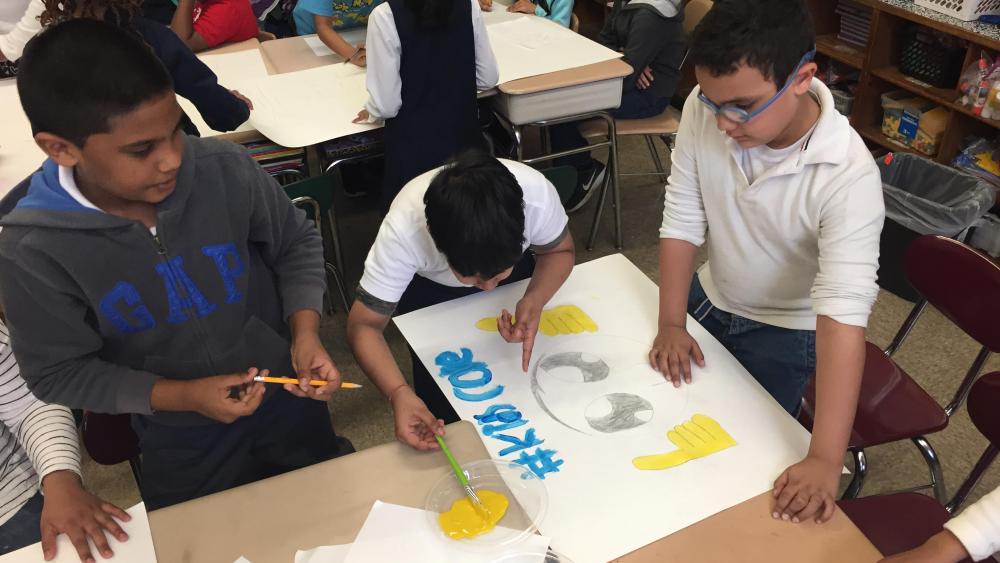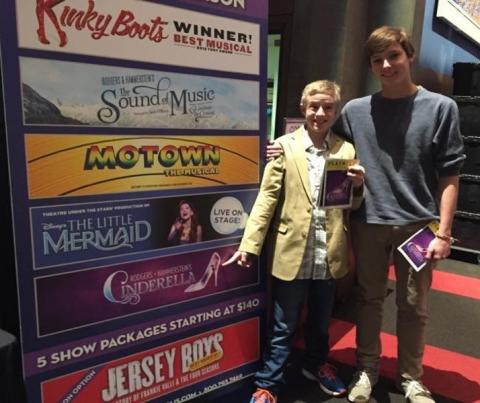It doesn't matter what grade you teach, where you're from, or the abilities of your students, it just matters that we inspire and empower ALL students to be giving and caring citizens.
Guest blog post by Beth Smith, Consultant, generationOn Indiana
We can inspire and empower ALL students to be giving and caring citizens through philanthropy education combined with service-learning. Vulnerable populations, including disabled students, benefit from the modeling of appropriate behaviors and skills demonstrated by their peers and adults in this inclusive approach.
In fact, service-learning and philanthropy education are excellent methods for acquiring data needed for both IEP goals assessments and for planning appropriate goals for an Annual Case Review. These methods are effective ways to evaluate students and collect data for planning appropriate, student-specific goals and objectives.
Common IEP Goals that can be addressed through a service-learning project include:
- Demonstrate appropriate peer relationships, cooperative learning, and assertiveness
- Make appropriate decisions on a daily basis
- Develop social understanding skills
- Increase social communication skills
- Demonstrate problem-solving skills
- Transition effectively between activities in the school and the mainstream
- Maintain and improve appropriate social skills in school and mainstream
Per each student’s specific needs, the special educator can add setting, benchmarks, criteria for mastery, method for evaluation, and evaluation schedule to the philanthropy lesson and related service-learning project.
Why try these methods?
Students engaged in service-learning introduce, reinforce, and practice social skills in an authentic setting. Social emotional skills include self-esteem, greetings, self-confidence, tolerating frustration, initiating peer interaction, self-control, eye contact, self-determination, physical proximity, self-advocacy, compliance, tact, and responsibility for one's own actions.
Through service-learning projects, students with disabilities can partner with non-disabled peers for peer modeling of appropriate behaviors and skills in a real-world setting.
Spotlight Scenario: High School
Through a service-learning class, Mr. Large, an educator at New Palestine High School, acts as facilitator to his students as they seek to make a difference for their peers through service learning. The students identify “Indiana Wishes” and collaborate with disabled buddies to create a service-learning experience.
Mr. Large’s students act as mentors throughout the service-learning experience. The students study basic philanthropy lessons like “What is Philanthropy?” as they prepare for their projects.
Special education students benefit from the collaboration with their peers and the employment of the appropriate skills during the planning and implementation of the project. For one specific wish, students studied the Arts as a Cultural Necessity, the expected social skills used at a performance, and attended a performance with their "buddies” to see the arts in action and practice their new social skills.
Spotlight Scenario: Elementary
 Demonstrating their service-learning acumen, Sugar Creek Elementary first graders created a service-learning project for their community. Mr. Lovell's students donated jeans and sweatshirts for their “Winter Warm Up" drive. The students created the advertisements and posters for the drive and collected the donated items. They were taught basic lessons in philanthropy and the importance of giving prior to the collection.
Demonstrating their service-learning acumen, Sugar Creek Elementary first graders created a service-learning project for their community. Mr. Lovell's students donated jeans and sweatshirts for their “Winter Warm Up" drive. The students created the advertisements and posters for the drive and collected the donated items. They were taught basic lessons in philanthropy and the importance of giving prior to the collection.
As an inclusive classroom all students worked collectively. According to Mr. Lovell, “The greatest benefit was seeing all of my students be compassionate and seeing them understand the benefits of philanthropy and helping others while also helping each other”.
Service-learning and philanthropy education are tremendous tools for acquisition and assessment of essential skills for ALL students.
Special educators can benefit from the observation and collection of authentic data to aide in appropriate planning for their students. Remember, we ALL have something to give.
About the author:
Beth Smith, an educator for more than 30 years in private, suburban public, inner city public, and rural public schools, has had the opportunity to incorporate service-learning in a variety of settings, disciplines, and curriculum. Service-learning has been an integral part of her teaching career.
Beth has had the opportunity to work in the cooperative inclusionary classroom, in community-based instruction, and in a self-contained special education classroom. She has worked with students with emotional disabilities, students on the autism spectrum, and students with mild disabilities. Beth was IPS Teacher of the Year and a finalist for Indiana Teacher of the Year.
Currently, Beth serves as an educational consultant for generationOn Indiana, facilitated through the Indiana Association of School Principals and the Indiana Middle Level Education Association.
Contact Beth Smith

